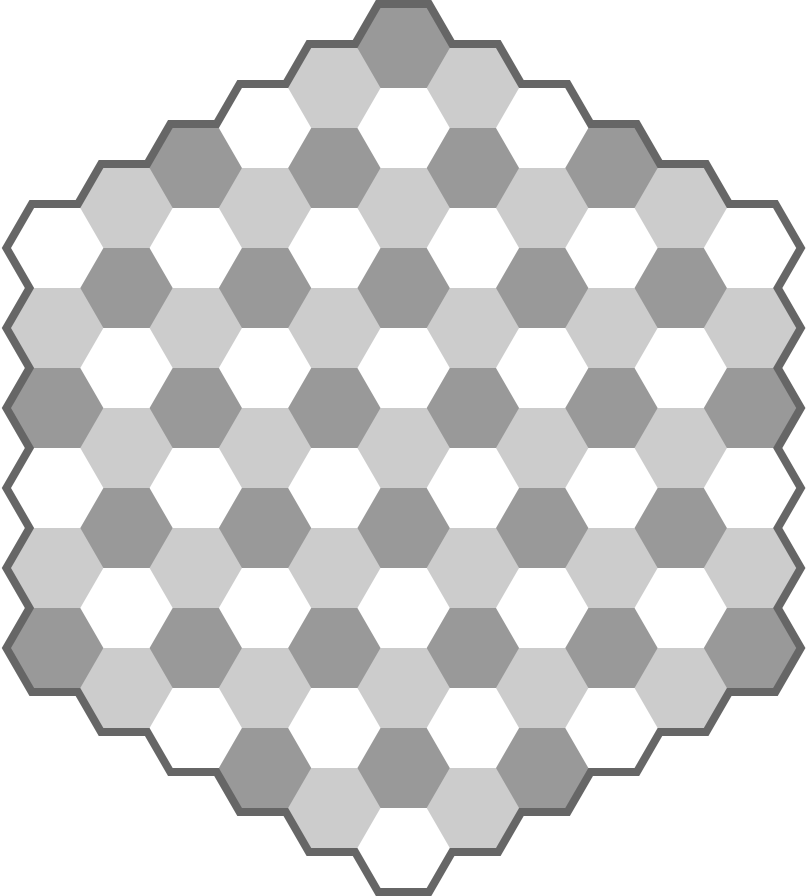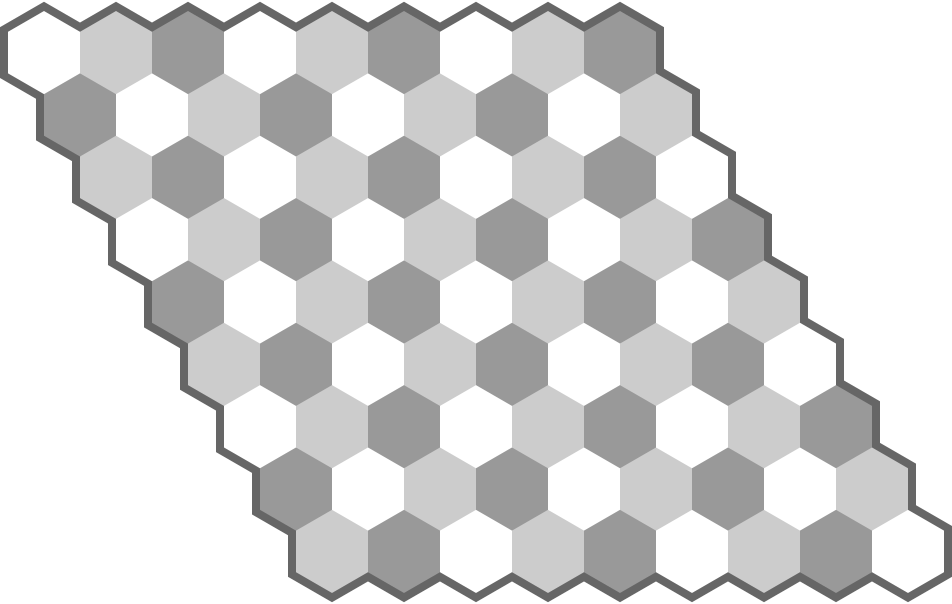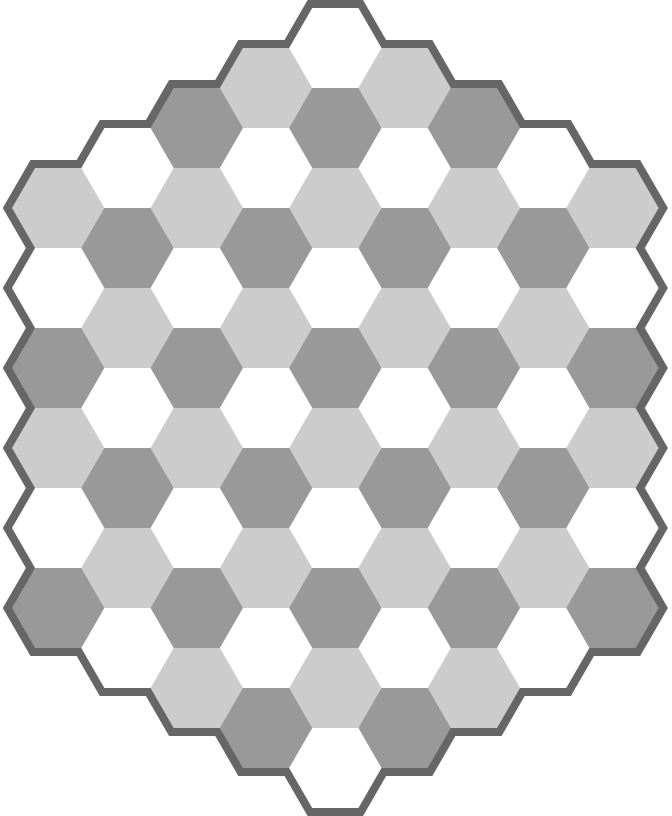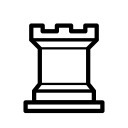


Hexagonal chessboards
Rules
This page contains detailed information about the nature of hexagonal chess boards and the movement of pieces on them. Pawn movement is not described here because that differs among different variants.
See affected games at Hexagonal chess variants, and some others at Three-player chess variants.



The boards consist of hexagonal fields. Usually everything is one and a half as many as on the rectangular board: each field has six sides instead of four, there are three field colours instead of two, and there are six natural directions instead of four. Pieces can usually move in one and a half times the directions than on the rectangular board.
Rook



The rooks can move in six natural directions, in straight lines.
Bishop



The bishops can move along diagonal lines. Here diagonal adjacency means two same-coloured fields whose vertices are connected by a short edge. Therefore bishops always move on fields with the same colour. Three bishops are needed to access every field of the board.
Queen



The queen combines the power of the rook and the bishop, so it can move in 12 directions.
King



The king can move not only to the six adjacent fields (in rook directions), but also to the six diagonally adjacent fields (in bishop directions). Therefore the king can move in the same directions as the queen, but only one field.
Knight



The knights can move to 12 fields. Its movement can be described by moving one field diagonally and then one field outwards straight. The 12 destination fields lay in a circular shape. Knights, as in chess, always end up on a differently coloured field, but here that can be two different colours. This property makes the knight more powerful than in chess, for example it can make three consecutive moves and arrive back to its original position (this is called triangulation).
Pawn movement rules vary among different variants.
As pieces move differently on a hexagonal board than on a rectangular one, their relative values also change. The following table shows estimations about average piece values on a hexagonal board and for comparison on a rectangular (8x8) board.
| |
|
|
|
|
|
| Hexagonal | 1 | 3 | 4 | 7 | 10 |
| Rectangular | 1 | 3 | 3 | 5 | 9 |
See also: Value of pieces.
On a hexagonal board different basic checkmates work than on a rectangular board (which you can see at: Basic endgames).
| Pieces | Result | Notes |
|---|---|---|
| Win | ||
| Win | ||
| Draw | ||
| Draw | ||
| Win | Unlike chess, here the two knights are strong enough to force checkmate. | |
| Draw | Mate exists but cannot be forced – unlike in chess. | |
| Draw | Mate exists but cannot be forced – unlike in chess. | |
| Win | Requirement: the three bishops move on three different field colours. |